Naval Communication Station Harold E. Holt
Monday, 22nd June 2009 by RobK
This enormous hexagon, a mile and a half in diameter, looks like some kind of massive occult symbol etched in the scrub on the remote western coast of Australia, 700 miles north of Perth.
In fact, we're looking at a communication station that transmits on the very low frequency (VLF) radio waveband to vessels of the US and Australian navies.
The facility, opened in 1967, consists of 13 guyed steel radio masts: one at the centre, and one at each corner of the inner and outer hexagons. (Street View gives a dizzying perspective from the base of one of them.) The central tower, known as Tower Zero, is 1,273 feet tall1, meaning that for the first nine years of its life it was the tallest structure in the southern hemisphere.2
Initially, the station was operated solely by the US Navy, and the nearby town of Exmouth was built to service it and house servicemen's families. For the first year of its operation, it was known as US Naval Communication Station North West Cape, after the promontory where it is located, but it was renamed in honour of the Australian prime minister who disappeared while swimming off a beach in Victoria3.
From 1975 the site was jointly run by the American and Australian navies, but in 1992 US personnel were withdrawn, and by 2002 the last Australian naval staff had left and operations were taken over by Boeing Australia.
Today, tourism seems to have a more important role in the life of Exmouth: visitors can tour public areas of the base, as well as exploring the gorges of the Cape Range National Park and snorkelling with manta rays and whale sharks in Ningaloo Marine Park.
The communication station still attracts controversy, however. Over the past few years, at least five aircraft have developed problems with their ADIRUs (instruments that supply the control systems with vital flight data) while in the general vicinity of the base. The most serious incident occurred last year, when more than 100 people on board Qantas flight 72 were injured when the plane went into a sharp dive.
Could the extremely powerful radio signals from the masts possibly cause interference? Some people think so, and the Australian Transport Safety Bureau has been looking into a possible link, but the official word is that transmissions from the base are "highly unlikely" to be responsible. That probably won't keep the conspiracy theorists quiet, though...
Read more about the communications station at Wikipedia and the Shire of Exmouth site.
-
Various sources give the height as anything from 1,194ft to 1,286ft. We're going with what the military say. ↩︎
-
Until an even taller VLF mast was built in 1978 near Woodside, Victoria, topping 1,400 feet. ↩︎
-
In a fine example of Aussie humour, he is also commemorated by the Harold Holt Swim Centre, a pool complex in the Melbourne suburb of Glen Iris. 🙂 ↩︎
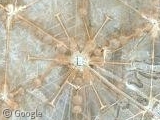
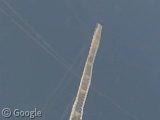
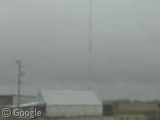
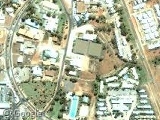
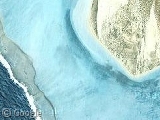
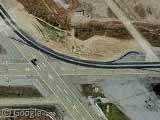
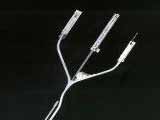
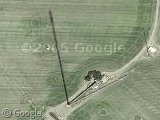
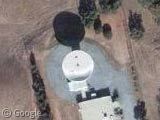
For those interested in very low frequency (VLF) radio wavebands the station is believed to a submarine communication station (not surface ships).
Jason:
I was stationed at the U.S. Naval Communications Station Harold E. Holt from September 1976 ’til February 1978. I worked in both the Personnel Office, and the Communications Center at various times during my tour of duty at the station. Your supposition about the purpose of the base as a submarine communication station is correct. The extremely powerful VLF waves (produced by the massive amount of electrical power generated by transformers in the building beneath/supporting Tower Zero) were able to send and receive messages to/from U.S. submarines beneath the North Pole. One interesting fact – known to the sailors working there – is that the power generated by the suspended wires which formed the antennae net within the hexagon formed by the towers was so powerful that a fluorescent light tube, being carried/held by a person while walking through the scrub anywhere within said hexagon, would light up without connection to any wired power source.
I never considered the potential health hazards from the electrical energy, but seem to have suffered no residual health problems resulting from the exposure. Said danger couldn’t have been that great, as if it had been so, no one could have worked in the power generation building beneath Tower Zero. 🙂
Hope this was informative and interesting.
Mike
Thanks Mike for your response. It was great reading about the power generated by the facility and a relief that your time working there had no health effect.
It will be interesting to see what becomes of the site in the future and the nearby Exmouth RAAF ‘bare base’ as India and China develop blue water navies. 🙂
Regards, Jason
The VLF transmitter site is a one million watt submarine transmitter; transmitting in low frequency that allows for the signal to penetrate the sea surface; higher frequencies would “skip” off the ocean surface. Its tuning center is housed in a 3 story building build from exotic non-conductive wood. As mentioned in another entry, you could illuminate fluorescent lights in that room when held. The power amplifiers were liquid cooled because of the power generated and the circuit breakers were the size of a small car.
The Royal Australian Air Force also has a ‘bare base’ to the south of Exmouth which is well worth a look in Google Maps/Earth. This is a fully equipped airbase, complete with bunkers and hardened aircraft shelters, which is only activated in emergencies.